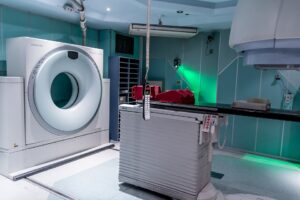 Nowadays the production of optical fibers is robust and flexible enough to address an exciting new range of biomedical applications. Fiber optic applications in general and they are in biomedicine have gained momentum in recent years. The optical fiber has been used primarily for endoscopy and laser power delivery, but now a wide base of academic and corporate-funded studies is exploring both in vivo and in vitro areas, with a number of new applications entering full-scale manufacturing. This growth has been fueled by a list of capabilities, including entering fuel-scale manufacturing. This growth has been fueled by a list of capabilities, including:
Nowadays the production of optical fibers is robust and flexible enough to address an exciting new range of biomedical applications. Fiber optic applications in general and they are in biomedicine have gained momentum in recent years. The optical fiber has been used primarily for endoscopy and laser power delivery, but now a wide base of academic and corporate-funded studies is exploring both in vivo and in vitro areas, with a number of new applications entering full-scale manufacturing. This growth has been fueled by a list of capabilities, including entering fuel-scale manufacturing. This growth has been fueled by a list of capabilities, including:
- electromagnetic interference (EMI)-free transmission of energy and signals
- small diameter
- biocompatible coating
- high mechanical flexibility
- image transmission
- the ability to sense pressure, temperature, chemicals, and strain.
The great capabilities suggest the introduction of fiber optic products in a wide range of applications. Such a broad range of applications requires a wide selection of fiber optic products with designs ranging from large-core, large-diameter multimode (MM) optical fibers for high-power laser light delivery to small-core, reduced-diameter single-mode (SM) optical fiber for in vivo sensing. Additional requirements demand advanced coatings because special coatings enable reduced thickness and greater tolerances: polyimide, for instance, in contradistinction to an acrylate, can withstand temperatures up to 300ºC as well as autoclave sterilization.
Device miniaturization is required for in vivo applications: fiber optic products and based on the fiber optic systems typically need to localize within a catheter tube where typical sizes for surgical procedures, such as coronary angioplasty, range from 5F to 8F (1473-2286 μn diameter). A standard optical fiber with a 245 μm coating diameter can fit within this catheter space, but it will need to accommodate other devices as well, including guide wires and manipulation tools. Beyond dimensions, an optical fibers stiffness must be considered as it can impact the flexibility of the overall catheter assembly, affecting the ability to guide the catheter correctly.
It is important to note that fiber optic products do not contain any electrically conductive or magnetic materials. Any fiber optic equipment can be considered free from electromagnetic interference (EMI). In other words, fiber optic products can be used in magnetic resonance imaging (MRI) devices and in close proximity to radiofrequency (RF) electrosurgery tools used for cutting, coagulating, desiccating, and fulgurating tissue. Alternative techniques require an electrical sensor element, making them not only unsuitable for MRI and RF use but also require a separate signal line for each sensor element, which adds to the cross-sectional area. Fiber optic solutions, in contrast, imply thousands of uniquely identifiable sensor elements and still require only the single line of fiber, without additional sacrifice to the diameter. This characteristic enables the transmission of multiple messages along one channel of communication. Such transmission often uses specially modified regions of the core called fiber Bragg gratings (FBGs).
In addition to this, one of the most impressive up-and-coming biomedical applications of fiber optic products is that of 3D shape sensing to facilitate procedures such as coronary angioplasty with minimal use of x-ray-assisted guidance. 3D shape sensing and distributed in vivo pressure sensing were not feasible, but optical fibers have made them possible.
Additionally, fiber optic devices have traditionally been developed and sold primarily for high-power laser applications. But their new generation and exactly a new generation of fiber optic probes allow both outputs of light in a particular format and collection of reflected light back into the optical fiber.
Optromix, Inc. is a U.S. manufacturer of innovative fiber optic products for the global market, based in Cambridge, MA. Our team always strives to provide the most technologically advanced fiber optic solutions for our clients. Our main goal is to deliver the best quality fiber optic products to our clients. We produce a wide range of fiber optic devices, including our cutting-edge customized fiber optic Bragg grating product line and fiber Bragg grating sensor systems. Optromix, Inc. is a top choice among the manufacturers of fiber Bragg grating monitoring systems. If you have any questions, please contact us at info@optromix.com

